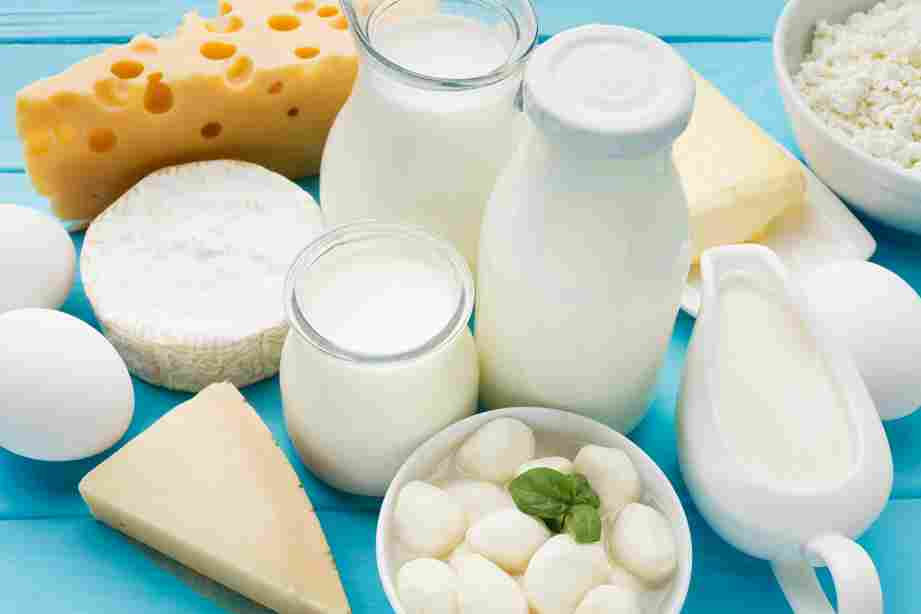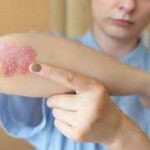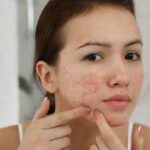Psoriasis is a fatal autoimmune skin disorder that affects 2 to 3 per cent of the total population worldwide. Diagnosis of Psoriasis is made by skin examination. It is characterized by the rapid buildup of skin cells and well-demarcated, erythematous plaques with red and silver scaly patches on the skin. It happens when a person’s body mistakenly attacks its tissues. In this blog, we will discuss psoriasis treatment diet plan that can help you manage symptoms.
Lifestyle management and proper medication play effective roles in the treatment of psoriasis. Eating a balanced diet can also improve gut health and decrease skin inflammation.
Here are the key points to provide an overview of psoriasis.
Types of Psoriasis
1. Plaque Psoriasis: Plaque psoriasis, also known as Psoriasis vulgaris, is the most common type of psoriasis. It appears as raised, red patches of skin covered with silver scales. It typically affects the scalp, elbows, and knees, lower back, but it can occur anywhere on the body.
2. Guttate Psoriasis: It presents as small, dot-like lesions that often develop after a bacterial or viral infection, most commonly strep throat, and tend to affect children and young adults.
3. Inverse Psoriasis or Intertriginous Psoriasis: Located in the folded area of skin such as the armpit, groin, elbows, and knees, inverse psoriasis typically presents as smooth, shiny, and inflamed patches of red skin.
4. Pustular Psoriasis: Presence of small, pus-filled blisters on the skin. These blisters, known as pustules, appear on red and inflamed skin. Pustular psoriasis includes generalized and localized forms. It commonly occurs on the hands and feet. It may cause systemic symptoms like fever and chills.
5. Erythrodermic Psoriasis: It is an abnormal and serious form of psoriasis that affects more than 90% of the body. It is characterized by widespread redness, inflammation, and scaling of the skin, resembling severe burns.
Symptoms of Psoriasis
· Red, raised patches of skin covered with thick, silvery scales.
· The patches may itch, burn, or hurt.
· Deformation of nails, such as pitting, discolouration, or separation from the nail bed.
· Swollen, painful joints or pus-filled blisters.
Treatment of Psoriasis
The treatment of psoriasis aims to reduce inflammation and manage the underlying cause. If a psoriasis patient does not take treatment at the right time, then inflammation may take a horrendous turn. Here are some treatments options available for psoriasis patients.
- Topical Treatment
Topical treatments are applied directly to the affected skin to alleviate symptoms and reduce inflammation. Creams or shampoos containing corticosteroids, moisturizers, and vitamin D analogues help to slow down skin cell growth and reduce inflammation.

- Medications
“Oral medication” or “Internal medication” is given as pills or a shot. These medications work throughout the body to target immune system dysfunction and reduce inflammation.
- Lifestyle Administration
Lifestyle modifications play a significant role in managing psoriasis and reducing its symptoms. These include avoiding triggers, managing stress, maintaining a healthy diet, and getting regular exercise.
Having a Psoriasis-friendly diet i.e. focusing on food that can nourish your skin and potentially reduce inflammation, can also help treat psoriasis.
Psoriasis Treatment Diet: Food to Avoid in Psoriasis
· Food containing lactose (dairy products) such as milk, yoghurt, cheese, and butter can trigger psoriasis and increase inflammation. Switching from cow’s milk to soya, almond or coconut milk helps to cure psoriasis.

· Food that contains gluten such as bread, baked goods, pasta, soup, etc. may also trigger psoriasis flare-ups and increase inflammation.
· Processed food contains less nutritional value and only has refined ingredients. Eating processed food may aggravate psoriasis disease and so it is best to avoid them.
Food to Eat in Psoriasis

· Fruits and Vegetables such as broccoli, cauliflower, spinach, strawberries, and grapes are high in antioxidants and help to decrease oxidative stress and inflammation.
· Fatty fish can provide the body with anti-inflammation omega-3s. Fatty fish includes fatty acids which are essential for our body.
· Food made up of healthy oils such as olive, coconut, or sunflower oil contain a higher ratio of omega-3 to omega-6 which are essential for our body.
Conclusion
Psoriasis is a chronic condition which results in raised inflammation in the body and necessitates ongoing management to control the symptoms. Consulting with a healthcare professional is essential for an accurate diagnosis and personalised treatment plan. Probiotic foods in your diet may help alleviate inflammation, reduce itching, and support your body’s natural healing processes.
The Ayursparsh Clinic & Panchakarma Center, a holistic wellness centre in Dharwad, is renowned for treating skin diseases like psoriasis, eczema, fungal infections, and other skin conditions.
Are you looking for a customised diet for psoriasis treatment? Then, connect with Dr Rashmi C. Patil and get relief from psoriasis symptoms.




